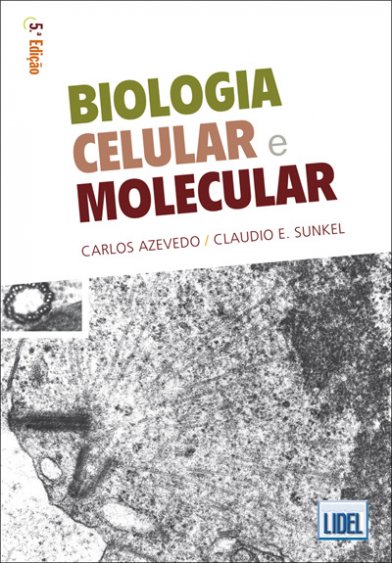Carlos Azevedo Biologia Celular Molecular Pdf File

Several homoplasmic pathologic mutations in mitochondrial DNA, such as those causing Leber hereditary optic neuropathy or non-syndromic hearing loss, show incomplete penetrance. Therefore, other elements must modify their pathogenicity. Discovery of these modifying factors is not an easy task because in multifactorial diseases conventional genetic approaches may not always be informative. Here, we have taken an evolutionary approach to unmask putative modifying factors for a particular homoplasmic pathologic mutation causing aminoglycoside-induced and non-syndromic hearing loss, the m.1494C>T transition in the mitochondrial DNA. The mutation is located in the decoding site of the mitochondrial ribosomal RNA. We first looked at mammalian species that had fixed the human pathologic mutation.
We Biologia Celular E Molecular Carlos Azevedo Pdf Download Flash Drive Lock, selected Disable Flash Drive, and then clicked Change to enter our password. Download NowDownload Now From Helpfulsoft Mp3go128 is a program that converts MP3 files from high bitrate to low bitrate. 2 adds flexible printing options, font selection, and a multilanguage interface.
These mutations are called compensated pathogenic deviations because an organism carrying one must also have another that suppresses the deleterious effect of the first. We found that species from the primate family Cercopithecidae (old world monkeys) harbor the m.1494T allele even if their auditory function is normal. In humans the m.1494T allele increases the susceptibility to aminoglycosides.
However, in primary fibroblasts from a Cercopithecidae species, aminoglycosides do not impair cell growth, respiratory complex IV activity and quantity or the mitochondrial protein synthesis. Interestingly, this species also carries a fixed mutation in the mitochondrial ribosomal protein S12. We show that the expression of this variant in a human m.1494T cell line reduces its susceptibility to aminoglycosides.
Because several mutations in this human protein have been described, they may possibly explain the absence of pathologic phenotype in some pedigree members with the most frequent pathologic mutations in mitochondrial ribosomal RNA. Introduction Human cells contain many mitochondria and each mitochondrion several mitochondrial DNA (mtDNA) molecules. The absence of mtDNA genetic variation in a person is named homoplasmy. However, homoplasmic mutations can be found in a particular individual when his/her mtDNA is different from a reference sequence, the revised Cambridge Reference Sequence (rCRS). If these mutations do not have phenotypic effect, they can survive in the populations for long periods of time.
On the contrary, if mutations have very dramatic functional effects, they will be very quickly removed from the populations. In between, there are several pathologic mtDNA mutations with moderate phenotypic effects. These are the etiologic factors for some of the most frequent mtDNA diseases, such as the Leber hereditary optic neuropathy (LHON) and the non-syndromic hearing loss (NSHL) (Fischel-Ghodsian,; Carelli et al., ). A common feature for these homoplasmic mutations with moderate functional effect is their tissue-specificity. For example, despite being present in every mtDNA molecule of each cell, LHON and NSHL mutations mainly affect retinal ganglion and cochlear cells, respectively. This fact suggests that tissue-specific factors, including the specific set of expressed proteins, are required for the manifestation of the pathologic phenotype (Hamalainen et al., ). Carlos Azevedo Biologia Celular Molecular Pdf Reader.
2405553 de 1454948 a 1285960 o 1150119 e 1136742 do 797882 da 627109. Carlos Azevedo Biologia Celular E Molecular Download Pdf.
Opera mini handler 7 apk download. To find more books about carlos azevedo biologia celular e molecular download pdf. It is also frequently found that maternal relatives of patients carrying homoplasmic mutations are asymptomatic.
This fact, again, suggests that other environmental and genetic factors are necessary for the phenotypic expression (Fischel-Ghodsian,; Carelli et al., ). The m.1494C>Deep house sample pack rar download free windows 7. T mutation in the 12S rRNA gene ( MT-RNR1) was found in several NSHL patients from a Chinese family. The oxygen consumption was lower in lymphoblastoid cell lines from homoplasmic mutant individuals (Zhao et al., ). Moreover, oxygen consumption and mtDNA-encoded protein synthesis was also lower in mutant transmitochondrial osteosarcoma 143B cell lines (cybrids) (Zhao et al., ). Therefore, the biochemical phenotype was transferred with the mtDNA.
As 12S rRNA is required for the synthesis of mtDNA-encoded proteins and all these polypeptides are part of the oxidative phosphorylation (OXPHOS) system, the main oxygen consumer of the cell, these results confirmed the pathogenicity of the m.1494C>T mutation. Since then, homoplasmic m.1494C>T mutation has been reported in 14 isolated NSHL patients and 22 Chinese and 3 Spanish NSHL pedigrees with different genetic background with respect to mtDNA (Rodriguez-Ballesteros et al.,; Wang et al.,; Chen et al.,,; Han et al.,; Yuan et al.,; Zhu et al.,; Wei et al.,,; Yang et al.,; Zhang et al., ). A total of 533 maternal relatives of these 26 families were studied, but 398 did not suffer from NSHL. Moreover, this mutation was also found in a normal Chinese individual in a population study to reconstruct the East Asian mtDNA phylogeny (Kong et al., ). The discovery of modifying factors that alter the penetrance of mutations is not an easy task.